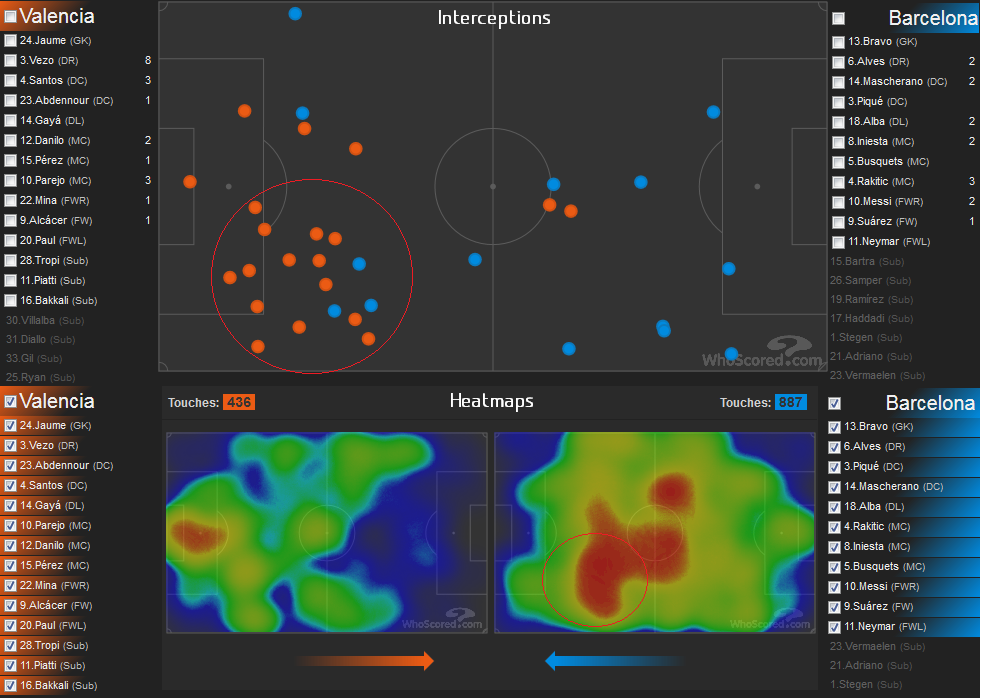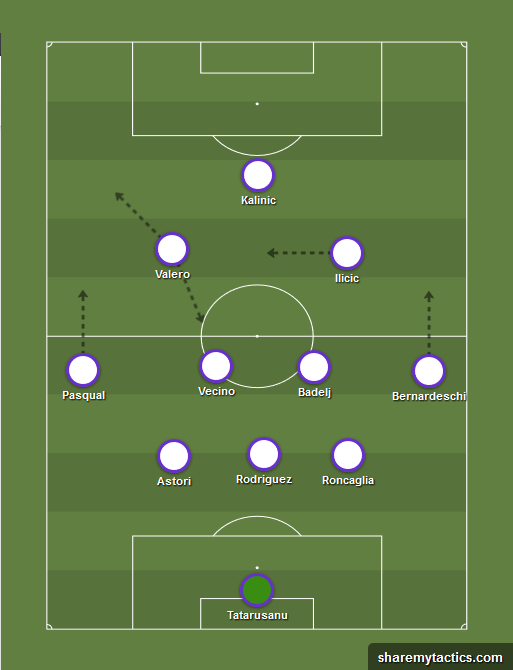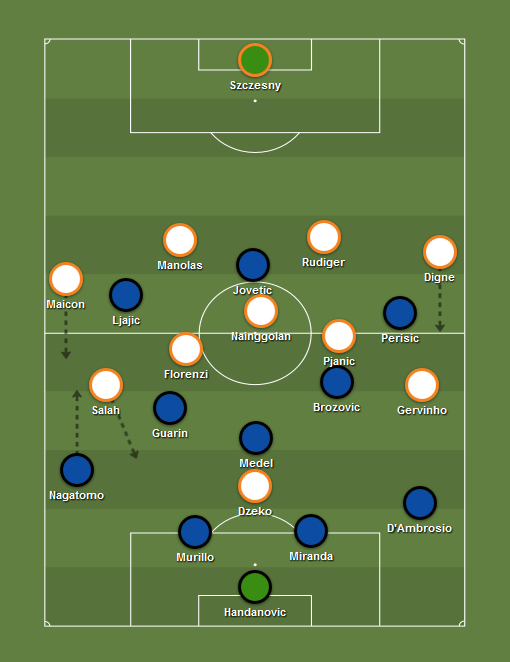Juventus went into the game looking to continue the run of form they were enjoying, against their rivals Fiorentina, who themselves had shown us some of the best football in Serie A this season. The home side lined-up with a familiar three at the back, with Evra and Cuadrado deployed as wing-backs. Khedira came into midfield alongside Marchisio and Pogba, with Dybala and Mandzukic up top. Fiorentina had a similar looking back three, with Bernardeschi and Alonso occupying the wings. They effectively had an extra man in midfield with Vecino and Badelj holding in the centre, but then Valero and Ilicic also deployed around that area, with more license to go forward to link with Kalinic.
The game started at an incredible tempo, pushed by Juventus’ obvious desire to hunt down the ball in Fiorentina’s third. We knew that Sousa’s team would try and keep the ball in their half and attempt to dominate possession, but Allegri’s trick was clearly to disrupt this from the start and put immense pressure on the opponent’s defence and midfield on the ball. This instantly left gaps in midfield and into Juve’s half where they looked to push up, as they almost dared Fiorentina to try to play through them and take advantage. It backfired when the away side won a penalty just minutes into the game, as Bernardeschi charged into the penalty area and went down after claiming contact from Chiellini. Replays suggested light contact, if any, and it appeared that the Viola winger had gone down dramatically to steal his team an advantage early on. Either way, the penalty was converted well by Ilicic – hard to the keeper’s left.
The electrifying intensity to the game continued, mostly through Juve’s pressure and willingness to challenge their opponent’s philosophy and intent to keep the ball in their half to control the tempo. Allegri was effectively challenging Fiorentina to play their usual game, and to their credit the away side stuck to their guns. They backed their technical ability in players like Vecino, Badelj and Valero to play the ball around, use width and direct play at their own volition. An early feature of Juve’s play was Pogba’s willingness to go forward and drift out to the left, combining with Evra, which in turn lead to the equaliser after just another couple of minutes. Pogba released Evra from a nice back flick and Bernardeschi lazily letting him get towards the byline and cross the ball unopposed. Cuadrado met the cross with his head and (possibly unintentionally) looped it back over Tatarusanu into the far corner of the goal. You could see Sousa shaking his head on the touchline as the goal went in, most likely partially because of the ease that Evra could get the cross in and partially because of how easily Cuadrado has walked in at the back of the box to header at goal unopposed. It was a bit of a nothing goal to concede after taking the lead so early.
Both teams were still at high tempo and urgency somewhat after the second goal, with Juventus still pressing high-up the pitch, particularly Mandzukic who charged at the goalkeeper and defenders on multiple occasions. Pogba continued to go forward and looked to act as a number 10 at times, linking the play and also sticking to his midfield duties. Tomovic was forced to play it long a couple of times, where his team would then lose possession, albeit winning it back in midfield. Borja Valero was covering ground through the middle, running back to help offer himself as an extra body to keep possession, and then trying to move the play up the pitch when necessary. He, along with Ilicic, became Viola’s main men on the counter, as those two were generally the ones that the ball went through on its route to goal through the centre of the pitch – and they did a good job in the first half of keeping this fluidity and transition in attacks. Juve could identify the danger of their opponents on the ball, and Chiellini wasn’t averse to literally running out of his defensive line to engage the ball when Ilicic gathered it (pic below). He probably didn’t do this just because he was getting bored standing next to Bonucci. Bernardeschi saw Chiellini become fixed on Ilicic and looked to run into his space, but Ilicic gave the ball back to Tomovic in favour of keeping possession instead of facing up Chiellini.








